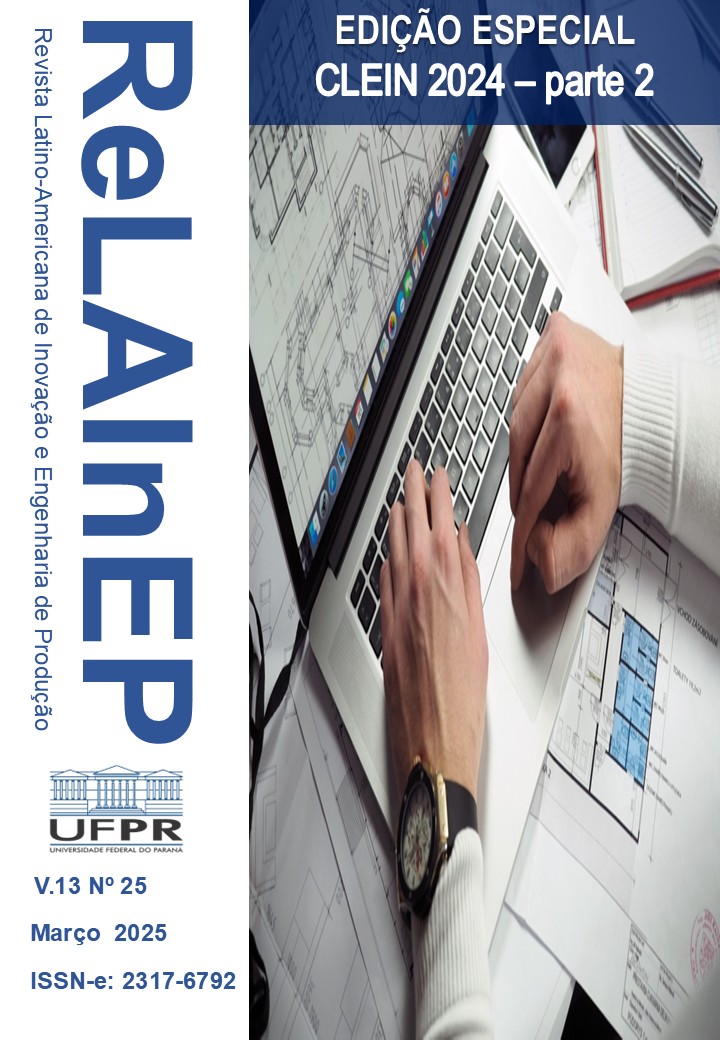POTENCIALIDADES DE LA INTELIGENCIA ARTIFICIAL EN LA APLICACIÓN DE ESTRATEGIAS CIRCULARES EN EL MARCO DE LA LOGÍSTICA INVERSA
DOI:
https://doi.org/10.5380/relainep.v13i24.98489Resumen
The circular economy maximizes resource efficiency in a continuous cycle of use and reuse, while reverse logistics manages the collection and recycling of used products by returning them to the value chain instead of throwing them away. Both complement each other by minimizing environmental impact, conserving resources and promoting a more sustainable economy. This work aims to analyze the potential offered by Artificial Intelligence as an innovative approach to Circular Economy strategies within the framework of Reverse Logistics. The method used was the Systematic Review of the Literature. The results obtained were based on the evaluation of key indicators such as the source of supply of materials, gas emissions, consumption and reuse of products, among others, demonstrating that the integration of smart technologies increases the use of recycled materials, reduces CO2 emissions, improves inventory management, maximizes efficiency in the supply chain, minimizes product waste. The application of the work allows companies to identify business opportunities, reduce costs, develop more sustainable products and services and innovate in reverse logistics, allowing them to increase competitiveness, improve environmental impact and encourage environmental conservation.
Descargas
Publicado
Cómo citar
Número
Sección
Licencia
Los autores que publican en esta revista concuerdan con los siguientes términos:
1. Autores mantiene los derechos de autor y conceden a la revista el derecho de primera publicación, con el trabajo simultáneamente licenciado bajo la Creative Commons - Atribución-NoComercial 4.0 Internacional que permite el compartir el trabajo con reconocimiento de la autoría y publicación inicial en esta revista.
2. Autores tienen autorización para asumir contratos adicionales por separado, para distribución no exclusiva de la versión del trabajo publicada en esta revista (por ejemplo, publicar en repositorio institucional o como capítulo de libro), con reconocimiento de autoría y publicación inicial en esta revista.
3. Los autores tienen permiso y son estimulados a publicar y distribuir su trabajo en línea (por ejemplo, en repositorios institucionales o en su página personal), ya que esto puede generar cambios productivos, así como aumentar el impacto y la cita del trabajo publicado (ver El efecto del acceso libre).
Para ello, se debe DESCARGAR EL FORMULARIO, firmar y cargar como Documentos Suplementarios con el título "Declaración del autor", junto a la sumisión del artículo.


